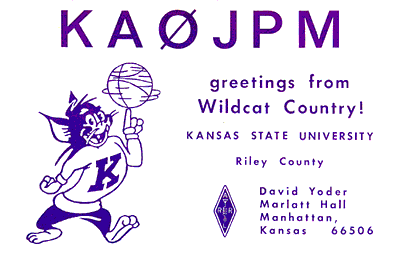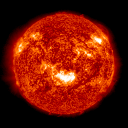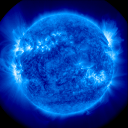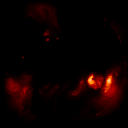|

Interesting Amateur Radio Sites

I've been maintaining the same links here and on the KSU Amateur Radio Club site. I decided I can do a better job with the links in one place. Click here to have a look.
My amateur radio activities in Manhattan, Kansas...
- shortwave listener since 1964
-- started with a Sentinel 305 5-tube receiver from 1948
-- used a Heathkit GR-54 general coverage receiver beginning in 1968
-- both still working just fine!
- received novice license on October 24, 1980
- received extra license on December 31, 1985
- volunteer examiner since 1986
- member: ARRL, KSUARC, Manhattan Area ARS, 10-10 International, Heard Island DX Association
- operating awards: 5BWAS, RCC, WAZ, DXCC (4 bands confirmed)
- 261 HF countries confirmed
- working on: 75m DXCC (6 to go -- maybe some day)
- primary interests: DX, HF propagation
- monitoring the KSØMAN repeater, 147.255+ and the WØQQQ repeater, 145.41-
- antenna farm: Butternut HF-6VX and Cushcraft A147-11 up 65 feet
- equipment: Icom IC-2AT, Kenwood TR-7800, Kenwood TS-930S, Ameritron AL-1200 amplifier
- trying to restore old broadcast radios
Here's my collection of antique radio links.

|
What's the sun up to? Sunspots? Flares? See for yourself.
|
 Extreme Ultraviolet He II
NASA - Goddard |
 Extreme Ultraviolet Fe IX
NASA - Goddard |
 Soft X-Ray Telescope
NASA - Goddard |
These are today's images, direct from NASA. Click for enlargements.
If the image says CCD Bakeout, click here to learn about that process. |
| The Sun Now (images from the Solar and Heliospheric Observatory) |
HF Propagation Indicators
(NOAA / Space Weather Prediction Center)
A Indices of Geomagnetic Activity
- The above link should take you to the right place in the page. Look for:
V. STATION A INDICES
- A < 10 indicates a quiet ionosphere (good).
- A > 30 indicates a disturbed ionosphere (bad news / high signal absorption).
- The Boulder A index is also available from radio station WWV hourly at :18 on 2.5, 5 and 10 MHz.
Planetary K Index of Geomagnetic Activity
- This bar graph shows the most current indicator of geomagnetic disturbance.
- The A and K indices are related, but the K index will be a more up-to-date indication.
- For the K index, lower is better, and zero is great.
- A K index of 5 or above indicates storm-level geomagnetic activity.
- The Boulder K index is also available from radio station WWV hourly at :18 on 2.5, 5 and 10 MHz.
- K Index basics from Wikipedia
Solar Flux (X-Ray wavelength) graph
- Updated every minute, this graph shows flares (represented by X-Ray flux) and their classes (C, M, X, etc.).
- Orders of magnitude of solar flares are represented by the letters A (lowest), B, C, M and X (highest intensity).
- Big spikes in the graph = flares = big trouble 18 to 36 hours later (ionospheric storm likely).
Solar and Geophysical Activity Summary
- Text report: satellite proton events, current level of geomagnetic activity and Boulder and Planetary K indices
HF Propagation Links - By Source
AMERICAN RADIO RELAY LEAGUE 
IONOSPHERIC PREDICTION SERVICE (IPS) - AUSTRALIA 
NASA 
NATIONAL EARTH SCIENCE TEACHERS ASSOCIATION 
NOAA 
NORTHWEST RESEARCH ASSOCIATES 
QSL.NET's PROPAGATION SITE 
SPACE WEATHER CANADA 
SPACE WEATHER.COM 
SUN VIEWER (ON TWITTER) 
UNIVERSITY CORPORATION FOR ATMOSPHERIC RESEARCH 
UNIVERSITY OF ALASKA 
WIKIPEDIA: PROPAGATION CONCEPTS 
WM7D's SOLAR RESOURCE PAGE 
WWV 
OTHER RESOURCES
If you would like to learn more about HF propagation, predictions and interpretation of the data you can find above, I recommend The NEW Shortwave Propagation Handbook. CQ magazine offers the book for about $19.95. (Link). It's written by George Jacobs, W3ASK and Dr. Ted Cohen, N4XX. George Jacobs has for several decades written the monthly propagation column in CQ.
|









